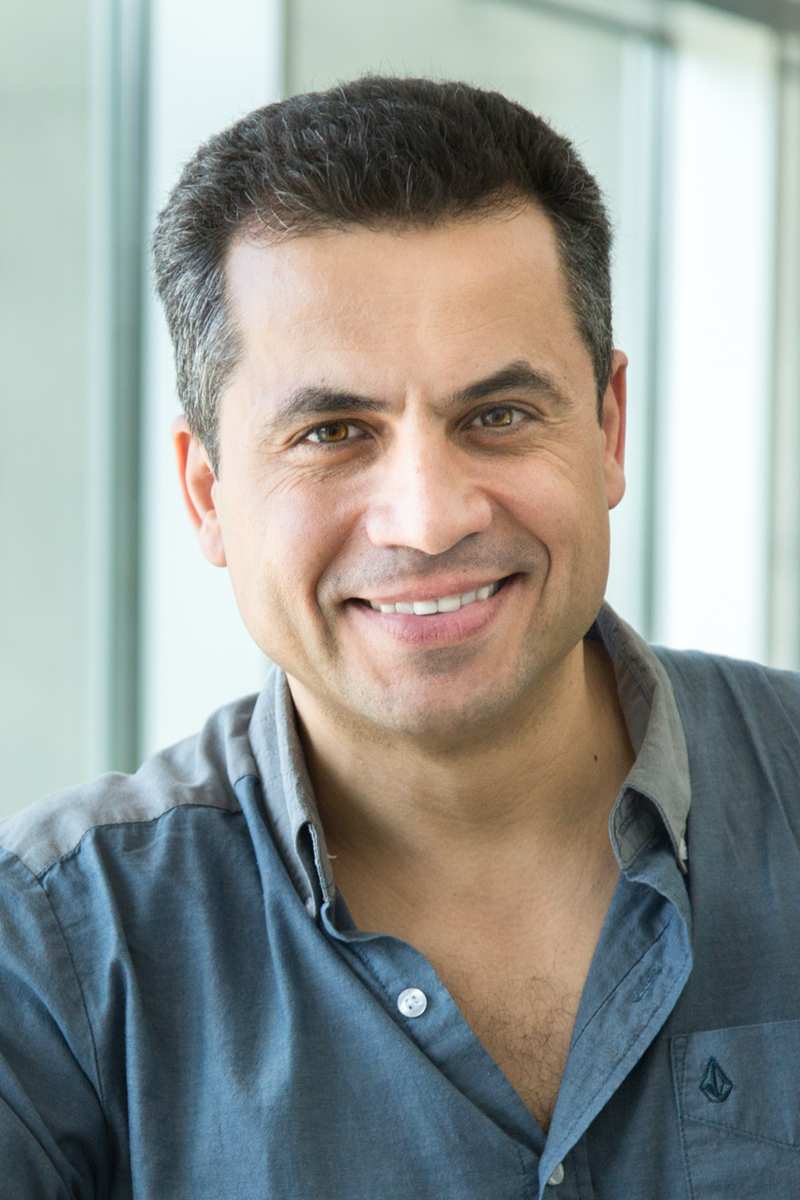Batista, Cristian D.

Cristian D. Batista
Lincoln Chair Professor | Theoretical Condensed Matter Physics
Deputy Director of Shull Wollan Center at ORNL
Brief Vita
- Lincoln Professor of Physics, University of Tennessee (2016-present)
- Permanent Staff Member, Los Alamos National Laboratory (2004-2016)
- J. Robert Oppenheimer (JRO) Fellow of the Los Alamos National Laboratory (2001-2004)
- Director’s Funded Postdoc, Los Alamos National Laboratory (2000-2001)
- Permanent Research Position, CONICET (Argentina) (1999-2000)
- Teaching Assistant, Instituto Balseiro (1993-1999)
- PhD, Physics, Instituto Balseiro-Universidad Nacional de Cuyo (1996)
- Licenciado in Physics, Instituto Balseiro-Universidad Nacional de Cuyo (1992)
- BS, Physics, Universidad de Buenos Aires (1989)
Selected Honors
- UT Graduate Student Senate Graduate Professor of the Year (2020)
- Fellow of the American Physical Society (2014)
- Distinguished Mentor Award, Los Alamos National Laboratory (2013)
- Fellow’s Prize of the Los Alamos National Laboratory (2012)
- Postdoctoral Publication Prize in Theoretical Physics, Los Alamos National Laboratory (2004)
- Fundacion Jose A. Balseiro’s Prize for the best Professor in Physics of Instituto Balseiro of Year (1997)
Highlights
Research Areas
I work in theoretical physics with emphasis in strongly interacting electron systems. My research tools combine analytical methods with numerical techniques for describing static and dynamical properties of many-body systems. I am particularly interested in the novel states of matter that are realized in frustrated quantum materials. Quantum magnetism offers the simplest playground (purely bosonic systems) to study the multiplicity of exotic quantum states matter, ranging from multipolar orderings to spin liquids, that can emerge at low energies out of very simple competing interactions. I believe frustration is also a guiding principle for finding novel quantum states of matter in itinerant systems (metals), such unconventional superconductivity. For this reason, we are currently study the role of frustration in strongly correlated metals.
The dynamical response of interacting quantum systems offers an invaluable tool for detecting proximity to novel quantum states of matter, as well as for characterizing these states. Developing experimental and theoretical tools for studying dynamical responses of quantum materials is crucial for the development of our field. One of my current areas of research is the development of field theory techniques for computing dynamical responses of quantum magnets with strong quantum fluctuations. We are also developing new numerical algorithms for extending semi-classical approaches to itinerant systems. These tools are essential for interpreting neutron scattering data obtained at the Spallation Neutron Source of the Oak Ridge National Laboratory (ORNL). This is an example of the kind of synergistic activities that we are currently developing at Shull Wollan center (a joint institute for neutron sciences).
Selected Recent Publications
- Magnetic vortex crystals in frustrated Mott insulator, Y. Kamiya and C. D. Batista, Phys. Rev. X 4, 11023 (2014), (https://journals.aps.org/prx/abstract/10.1103/PhysRevX.4.011023).
- Bose-Einstein condensation in quantum magnets, V. Zapf, M. Jaime and C. D. Batista, Rev. Mod. Phys. 86, 563 (2014), (http://journals.aps.org/rmp/abstract/10.1103/RevModPhys.86.563).
- Dimensional reduction at a quantum critical point, S. E. Sebastian, N. Harrison, C. D. Batista, L. Balicas, M. Jaime, P. A. Sharma, N. Kawashima & I. R. Fisher, Nature 441, 617 (2006), (http://www.nature.com/nature/journal/v441/n7093/abs/nature04732.html).
- Efimov effect in quantum magnets, Y. Nishida, Y. Kato and C. D. Batista, Nature Physics 9, 93 (2013). (http://www.nature.com/nphys/journal/v9/n2/full/nphys2523.html).
- Electronic orbital currents and polarization in Mott insulators, L. N. Bulaevskii, C. D. Batista, M. V. Mostovoy, and D. I. Khomskii Phys. Rev. B 78, 024402 (2008), (http://journals.aps.org/prb/abstract/10.1103/PhysRevB.78.024402).
- Itinerant Electron-Driven Chiral Magnetic Ordering and Spontaneous Quantum Hall Effect in Triangular Lattice Models, Ivar Martin and C. D. Batista Phys. Rev. Lett. 101, 156402 (2008), (http://journals.aps.org/prl/abstract/10.1103/PhysRevLett.101.156402).
- Magnetic-Field-Induced Condensation of Triplons in Han Purple Pigment BaCuSi2O6, M. Jaime, V. F. Correa, N. Harrison, C. D. Batista, N. Kawashima, Y. Kazuma, G. A. Jorge, R. Stern, I. Heinmaa, S. A. Zvyagin, Y. Sasago, and K. Uchinokura Phys. Rev. Lett. 93, 087203 (2004), (http://journals.aps.org/prl/abstract/10.1103/PhysRevLett.93.087203).
- Stiffness from disorder in triangular-lattice Ising thin films, Shi-Zeng Lin, Y. Kamiya, G-W. Chern, Phys. Rev. Lett. 112, 155702 (2014). (https://journals.aps.org/prl/abstract/10.1103/PhysRevLett.112.155702).
- Topological defects as relics of emergent continuous symmetry and Higgs condensation of disorder in ferroelectrics, S-Z Lin, X. Wang, Y. Kamiya, G-W Chern, F. Fan, D. Fan, B. Casas, Y. Liu, V. Kiryukhin, W. Zurek, C. D. Batista and S-W Cheong, Nature Physics 10, 970–977 (2014). (https://www.nature.com/articles/nphys3142).
- Resistivity minimum in highly frustrated magnets, Z. Wang, K. M. Barros, G-W. Chern, D. L. Maslov and C. D. Batista, Phys. Rev. Lett. 117, 206601 (2016). (https://journals.aps.org/prl/abstract/10.1103/PhysRevLett.117.206601)
Please see my Google scholar profile for a complete list of publications.
